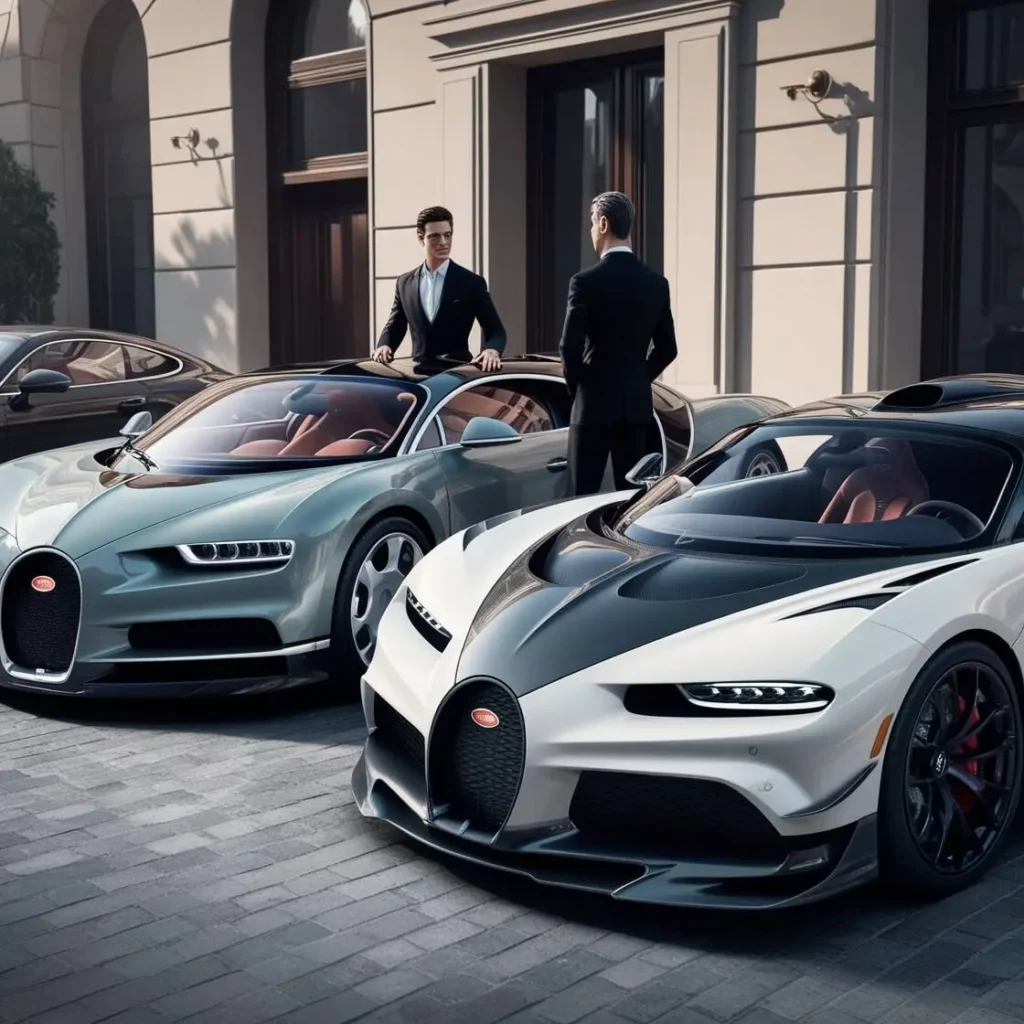Bugatti vs. Koenigsegg: A Battle of Titans
Let’s talk big: Bugatti Vs Koenigsegg, the world of hypercars is one that captures the imagination of enthusiasts and casual observers alike. Among the most prominent players in this exclusive arena are Bugatti and Koenigsegg. Both manufacturers have garnered a reputation for creating some of the fastest and most luxurious vehicles on the planet. This article aims to delve into the captivating rivalry between these two automotive giants, exploring their histories, engineering feats, performance metrics, and the technological innovations that set them apart.

Index
A Brief History of Bugatti and Koenigsegg
To fully understand the rivalry between Bugatti and Koenigsegg, it is essential to explore their respective histories. Bugatti, founded in 1909 by Italian-born engineer Ettore Bugatti, has a long and storied past in automotive excellence. Known for its artistry and engineering prowess, the brand quickly became synonymous with luxury and performance. The Bugatti Type 35, produced in the 1920s, remains one of the most successful racing cars of all time, marking the brand’s early dominance in motorsport.
In contrast, Koenigsegg is a much younger company, founded in 1994 by Christian von Koenigsegg in Sweden. Koenigsegg set out to produce high-performance sports cars that pushed the boundaries of engineering and design. The company’s first production car, the Koenigsegg CC, was introduced in 1996, and since then, Koenigsegg has become known for its relentless pursuit of speed and innovation.
Despite their differing origins—one steeped in history and the other in modernity—both brands share a commitment to excellence and a passion for creating the ultimate driving machines.
Engineering Marvels: The Heart of the Machines
When it comes to engineering, both Bugatti and Koenigsegg are at the pinnacle of automotive technology. Bugatti’s most iconic model, the Veyron, made headlines for its groundbreaking specifications. With an 8.0-liter quad-turbocharged W16 engine, the Veyron could produce up to 1,200 horsepower and achieve a top speed of 267 mph, making it one of the fastest production cars of its time.
In recent years, Bugatti introduced the Chiron, an even more powerful iteration of its predecessor. The Chiron’s W16 engine produces a staggering 1,479 horsepower, allowing it to reach a top speed of 304 mph. What sets Bugatti apart is not just raw power; the brand places a strong emphasis on luxury and refinement, resulting in a driving experience that is as comfortable as it is exhilarating.
On the other hand, Koenigsegg has gained a reputation for its innovative engineering solutions. The Koenigsegg Jesko, for example, features a 5.0-liter twin-turbocharged V8 engine that generates up to 1,600 horsepower when fueled with E85 biofuel. The Jesko is equipped with a unique nine-speed Light Speed Transmission, allowing for lightning-fast gear shifts. Koenigsegg’s focus on lightweight materials, such as carbon fiber, contributes to its impressive power-to-weight ratio, enhancing performance without sacrificing efficiency.
Both manufacturers are known for pushing the envelope in automotive engineering, yet their approaches reflect their distinct philosophies—Bugatti leans toward grand luxury, while Koenigsegg emphasizes pure performance and innovation.
Performance: Speed and Handling
In the world of hypercars, performance metrics are often the primary focus for enthusiasts and collectors alike. Bugatti and Koenigsegg have both produced vehicles that not only excel in speed but also in handling and driving dynamics.
Bugatti’s vehicles are engineered to provide a balance between blistering speed and everyday usability. The Chiron, for instance, can accelerate from 0 to 60 mph in just 2.4 seconds, showcasing its incredible power. The all-wheel-drive system ensures optimal traction, while advanced aerodynamics contribute to stability at high speeds. However, Bugatti also prioritizes comfort, allowing drivers to enjoy the luxurious interior while experiencing supercar performance.
In contrast, Koenigsegg’s vehicles are designed with a more track-focused mentality. The Jesko, for example, is engineered to achieve maximum lap times on racetracks around the world. With its lightweight construction and advanced suspension system, the Jesko offers exceptional agility and responsiveness. The vehicle’s aerodynamics have been meticulously designed to provide downforce, enabling high-speed cornering without compromising stability.
Both brands have proven their mettle on the track, but their philosophies diverge in how they approach performance. Bugatti aims for an exhilarating experience that marries speed with comfort, while Koenigsegg focuses on delivering a raw, unfiltered driving experience that emphasizes track capability.
Design: The Aesthetics of Power
The design language of both Bugatti and Koenigsegg reflects their respective philosophies and target markets. Bugatti’s vehicles are often described as automotive sculptures, characterized by flowing lines and a sense of elegance. The Chiron’s sleek silhouette and distinctive horseshoe grille are instantly recognizable, embodying the brand’s commitment to luxury and sophistication. The interior is equally opulent, featuring the finest materials, customizable options, and state-of-the-art technology.
Koenigsegg, on the other hand, takes a more aggressive and futuristic approach to design. The Jesko features sharp angles and an aerodynamic profile that exudes performance. Every element is meticulously crafted for both aesthetics and functionality. The interior, while luxurious, is more focused on the driver, featuring a minimalist design that emphasizes the experience of driving.
Both brands prioritize craftsmanship and attention to detail, but their design philosophies cater to different audiences. Bugatti appeals to those seeking grandeur and luxury, while Koenigsegg targets enthusiasts looking for cutting-edge performance and innovation.
Technological Innovations
Technological advancements are a crucial aspect of the rivalry between Bugatti and Koenigsegg. Bugatti has integrated several innovative features into its vehicles to enhance performance, safety, and luxury. The Chiron, for instance, employs an advanced all-wheel-drive system, ensuring optimal power distribution to all four wheels. Additionally, Bugatti incorporates a sophisticated braking system that allows for rapid deceleration even at high speeds.
Koenigsegg, however, has made headlines for its revolutionary engineering solutions. The company’s development of a camless engine design is a notable example. This technology eliminates traditional camshafts, allowing for precise control of valve timing and improving overall performance. Koenigsegg has also pioneered the use of lightweight composite materials, contributing to its vehicles’ impressive power-to-weight ratios.
Both manufacturers continuously push the boundaries of automotive technology, but their innovations reflect their distinct priorities. Bugatti focuses on integrating luxury and performance seamlessly, while Koenigsegg prioritizes cutting-edge engineering solutions that maximize performance.
The Future of Bugatti and Koenigsegg
As the automotive landscape evolves, both Bugatti and Koenigsegg are well-positioned to adapt to changing consumer preferences and regulatory environments. Bugatti’s commitment to luxury and performance ensures its continued relevance in the hypercar market. The brand’s exploration of hybrid and electric technologies hints at a future where performance and sustainability coexist.
Koenigsegg, with its focus on innovation, is also looking to the future. The company has already made strides in developing hybrid technology, demonstrating a commitment to reducing emissions while maintaining performance. As the automotive industry shifts toward electric and hybrid vehicles, both manufacturers are likely to play pivotal roles in shaping the future of high-performance cars.
Conclusion
In the battle between Bugatti and Koenigsegg, enthusiasts are treated to a captivating showcase of engineering brilliance, performance, and luxury. While Bugatti leans toward the grand luxury and refinement, Koenigsegg embodies cutting-edge performance and innovation. Both manufacturers have carved out unique identities within the hypercar realm, attracting passionate followers and collectors. As the automotive landscape continues to evolve, the rivalry between these two titans will undoubtedly inspire future innovations and redefine the limits of what is possible in the world of high-performance vehicles.
